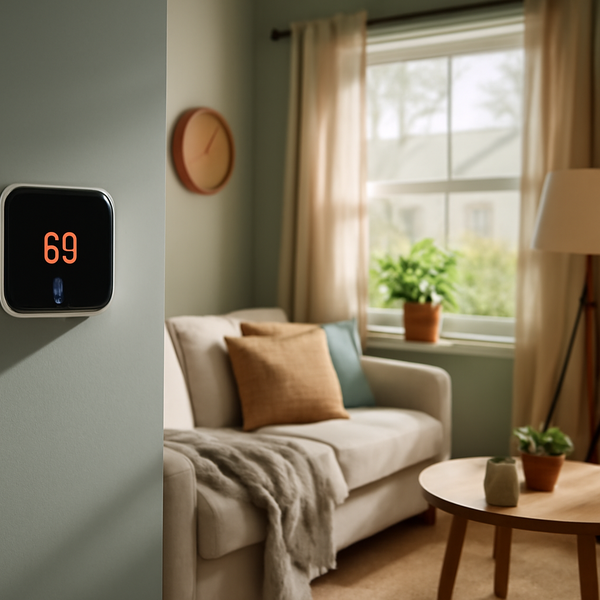
Welcome to our guide on energy-saving tips for your home! Discover how simple changes can lead to significant savings on your energy bill. Let's explore some practical and easy adjustments you can implement today.
Optimize Your Lighting
Lighting accounts for a significant portion of household energy consumption. Switching to LED bulbs can drastically reduce your energy bills as they use up to 75% less energy and last 25 times longer than incandescent lighting. LEDs not only offer energy efficiency but also come in various brightness and color options to match any mood or setting. Implementing smart lighting solutions, such as sensors or timers, can further enhance energy savings by ensuring lights are only on when needed. Don't forget to turn off lights when not in use and consider installing dimmers to adjust the lighting according to your needs. Utilizing natural light by opening curtains during the day is also a great way to conserve energy. By maximizing natural light and switching to energy-efficient bulbs, you create an environmentally friendly lighting strategy that reduces carbon footprints and ultimately saves money. These straightforward changes not only enhance the ambiance of your home but also promote sustainable living, making your household more energy resilient.
Efficient Heating and Cooling
Heating and cooling can majorly contribute to energy costs. To manage these expenses, ensure your home is well-insulated and use programmable thermostats to maintain efficient temperatures while you're home and away. Programmable thermostats can significantly reduce energy wastage by adjusting temperatures automatically based on your schedule, allowing for optimal comfort without excessive usage. Regular maintenance of HVAC systems is also essential as it ensures efficiency and prevents wear that could lead to higher energy consumption. Additionally, using ceiling fans in conjunction with your HVAC system can help distribute warm or cool air throughout your rooms evenly, allowing you to rely less on heating and cooling systems. Ceiling fans, when used correctly, can create a wind-chill effect in summers or help push down warm air during winters. Embracing these strategies not only helps in cutting down on energy expenses but also in promoting a more sustainable and comfortable living environment, reducing your home's overall energy footprint while enhancing comfort.
Water-Saving Devices
Beyond just turning off the tap while brushing your teeth, investing in water-saving devices can promise significant savings. Consider installing low-flow showerheads and faucet aerators to reduce water usage without compromising water pressure. These devices can help conserve water substantially by controlling the flow rate, making everyday activities more efficient. Fixing leaks promptly around your home is essential as even a small drip can waste gallons of water a day. Leaks, when left unaddressed, can not only incur high water bills but also lead to property damage and mold growth. Running full loads in your dishwasher and washing machine can also optimize both water and energy use. By being mindful of appliance efficiency and usage, you reduce waste and promote sustainability. Coupled with simple adjustments like reducing shower time and choosing energy-efficient appliances, these practices effectively manage resource consumption, offering economic benefits and contributing to broader environmental conservation efforts.
Appliance Efficiency
Large appliances in your home can consume a lot of energy, often silently elevating your utility bills. Replacing old appliances with Energy Star-rated models can dramatically cut down costs. These appliances are designed to use less energy while maintaining effective performance. Unplugging appliances when not in use can also prevent 'phantom load' costs—energy consumed by devices in standby mode. Consider using a smart power strip to help manage multiple devices efficiently, automatically cutting power to devices that are not in use. Additionally, always ensure your fridge and freezer doors are sealed properly to avoid energy waste. Regularly defrosting freezers and not overloading the fridge can also maintain energy efficiency. By making strategic choices regarding appliances and their use, you tap into considerable savings, reducing both your environmental impact and energy expenditure, fostering a more sustainable living environment that is responsive to both modern needs and ecological demands.
Insulation and Weatherproofing
Proper insulation is crucial for energy conservation in any home. By adequately insulating your home, you maintain temperature control year-round, reducing the need for excessive heating or cooling. Consider sealing gaps and adding insulation to walls, roofs, and floors to maintain a comfortable home temperature, thereby minimizing energy loss. Weatherproofing windows and doors with caulking or weather-stripping can further prevent energy loss, blocking drafts that facilitate temperature fluctuations. Investing in double-glazed windows can also improve energy efficiency while providing better soundproofing. These windows offer excellent thermal insulation by trapping a layer of air between two panes, keeping your home warm in the winter and cool in the summer. These enhancements not only provide immediate financial relief in terms of reduced energy costs but also enhance the overall comfort and value of your home over time. By investing in robust insulation and weatherproofing measures, you create a more energy-efficient, cost-effective, and comfortable living space while contributing to environmental sustainability goals.